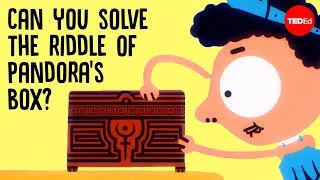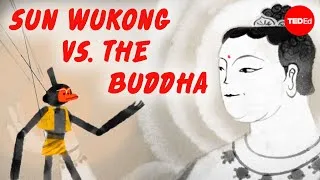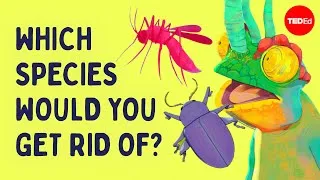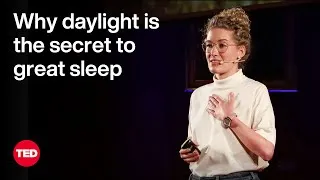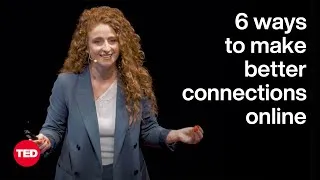請雙擊下方英文字幕播放視頻。
譯者: Lilian Chiu
審譯者: Carol Wang
00:06
Meet Odontochelys semitestacea.
0
6899
3000
來見見半甲齒龜。
00:09
This little creature spends its days
splashing in Late Triassic swamps
1
9899
4180
這小生物會整天在
晚三叠世的沼澤中玩水,
00:14
with a host of other reptiles.
2
14079
2421
和其他爬蟲類一起玩。
00:16
Under the surface lies its best
defense against attack:
3
16500
4000
在水面之下,有著
抵禦攻擊的最佳防護:
00:20
a hard shell on its belly.
4
20500
3020
腹部的硬殼。
00:23
Odontochelys is an early ancestor
of the turtle.
5
23520
3470
半甲齒龜是烏龜的早期祖先。
00:26
Its half-shelled body illustrates an
important point about the modern turtle:
6
26990
4550
牠的身體上有半甲,可以說明
現代烏龜的一個重要特點:
00:31
it actually has two shells that develop
totally separately
7
31540
3425
烏龜其實有兩個殼,
在胚胎就是完全分開發展的。
00:34
while the turtle is still an embryo.
8
34965
2410
00:37
Both are extensions of the animal’s
skeleton,
9
37375
2410
兩個殼都是從該動物的
骨骼延伸出來的,
00:39
and together they are made
of almost 60 bones.
10
39785
3514
加起來,它們一共由
近六十塊骨頭組成。
00:43
Like other embryos,
11
43299
1710
和其他胚胎一樣,
00:45
turtle embryos are made of
undifferentiated cells
12
45009
3270
烏龜胚胎是由未分化的細胞構成,
00:48
that become specific cell types,
13
48279
1930
它們會變成特定的細胞類型,
00:50
and then organs and tissues,
14
50209
1970
接著透過基因活動
以及細胞之間的溝通,
00:52
through gene activity and communication
between cells.
15
52179
3770
變成器官和組織。
00:55
At first, turtle embryos look very similar
to those of other reptiles,
16
55949
4900
一開始,烏龜胚胎
看起來和其他爬蟲類、
鳥類、哺乳類的胚胎很相似,
01:00
birds, and mammals,
17
60849
1432
01:02
except for a bulge of cells called
the carapacial ridge.
18
62281
3870
差別只有一塊細胞
凸起,稱為背甲脊。
01:06
The ridge expands around the body
between the neck and lower back,
19
66151
4150
背甲脊沿著身體擴張,
從脖子一直延伸到下背,
01:10
creating a disc shape.
20
70301
1930
創造出一個圓盤型。
01:12
It guides the formation of the upper part
of the turtle’s shell,
21
72231
3610
它引導了龜殼上半部的形成,
01:15
called the carapace, likely by attracting
the cells that will become ribs.
22
75841
4900
上半部稱為背甲,形成方式
可能是吸引會變成肋骨的細胞。
01:20
Instead of curving downwards
to make a regular rib cage,
23
80741
3480
這些肋骨並沒有向下彎曲
形成一般的胸廓,
01:24
the ribs move outwards towards the
carapacial ridge.
24
84221
3980
反而朝背甲脊的方向向外移動。
01:28
They then secrete a signaling protein
25
88201
2280
它們能夠分泌一種訊號蛋白質,
01:30
that converts surrounding cells
into bone-forming cells.
26
90481
3890
將周圍的細胞轉換為
形成骨頭的細胞。
01:34
These fifty bones grow until they meet
and connect with sutures.
27
94371
4390
這五十塊骨頭不斷成長,
直到相碰、相接,形成縫合線。
01:38
A ring of bone solidifies
the carapace’s edges.
28
98761
3804
一圈骨頭讓背甲的邊緣
變得更堅固。
01:42
The outer layer of skin cells produces
the scales, known as scutes,
29
102565
4520
皮膚細胞的外層會產生鱗片,
即一般所知的鱗甲,
01:47
that cover the carapace.
30
107085
2447
將背甲覆蓋住。
01:49
The development of the bottom half
of the shell, the plastron,
31
109532
3830
龜殼的下半部的發展,
也就是胸甲的發育,
01:53
is driven by neural crest cells,
32
113362
2190
是由神經脊細胞所驅動,
01:55
which can produce a variety of different
cell types including neurons,
33
115552
4480
這些細胞能產生各種細胞類型,
包括神經元、軟骨,和骨頭。
02:00
cartilage and bone.
34
120032
1873
02:01
A thick shield of these cells
spreads across the belly,
35
121905
3840
這些細胞所形成的厚盾
散佈在整個腹部上,
02:05
coming together in regions that produce
nine plate-like bones.
36
125745
4860
集結起來,在一些部位
產生出九塊板狀的骨頭。
02:10
Eventually, these connect to the
carapace by sutures.
37
130605
4376
最後,透過縫合線,
它們會和背甲連結起來。
02:14
A turtle’s shell has obvious advantages
for guarding against predators,
38
134981
4062
龜殼很明顯有利於
抵抗捕食性動物,
02:19
but the rigid casing also presents
some challenges.
39
139043
3714
但堅硬的外殼也造成了一些困難。
02:22
As the turtle grows,
40
142757
1520
隨著烏龜長大,
02:24
the sutures between the bones
of the carapace and plastron spread.
41
144277
4130
背甲和胸甲的骨頭
之間的縫合線會伸展開。
02:28
Most mammals and reptiles rely on a
flexible rib cage
42
148407
3700
大部分的哺乳類和爬蟲類
仰賴擴張有彈性的胸廓,
讓牠們能夠呼吸,
02:32
that expands to allow them to breathe,
43
152107
2370
02:34
but turtles use abdominal muscles
attached to the shell instead:
44
154477
4130
但烏龜卻是用連結在
龜殼上的腹部肌肉:
02:38
one to breathe in,
and one to breathe out.
45
158607
3210
一組肌肉拉動肺部吸氣,
另一組肌肉擠壓肺部吐氣。
02:41
So how did the shell evolve?
46
161817
2210
所以,龜殼怎麼演進?
02:44
Though there are still gaps in the
fossil record,
47
164027
2330
雖然在化石記錄中
還有些空白未知之處,
02:46
the first step seems to have been
a thickening of the ribs.
48
166357
3600
第一步似乎是肋骨變粗。
02:49
The oldest known turtle ancestor,
49
169957
2600
我們所知最古老的烏龜祖先
02:52
a creature called Eunotosaurus africanus,
50
172557
3210
是一種叫做正南龜的生物,
02:55
lived 260 million years ago and looked
almost nothing like a modern turtle,
51
175767
6160
牠們生活在兩億六千萬年前,
看起來一點也不像現代的烏龜,
03:01
but it had a set of broad, flat ribs
52
181927
2790
但牠們有一組寬廣、平坦的肋骨,
03:04
that anchored the muscles
of its powerful forearms.
53
184717
3300
用來固定其強壯前臂的肌肉。
03:08
Eunotosaurus was likely
a burrowing creature,
54
188017
3070
正南龜很可能是會挖地洞的生物,
03:11
digging homes for itself in what’s
now southern Africa.
55
191087
4570
在現今的南非,自己挖洞造窩。
03:15
Odontochelys semitestacea illustrates
another, later step in turtle evolution,
56
195657
5488
半甲齒龜則代表了烏龜
演化過程中較後段的另一步,
03:21
with thick ribs like Eunotosaurus
plus a belly plate for protection.
57
201145
4410
牠們有正南龜的粗肋骨,
再加上腹部的保護板塊。
03:25
Our first fossil evidence of the full
shell characteristic of modern turtles
58
205555
4616
我們所能找到具有現代龜殼
所有特性的化石證據當中,
03:30
is about 210 million years old,
59
210171
3120
最早的來自大約兩億一千萬年前,
03:33
and belongs to a species called
Proganochelys quenstedti,
60
213291
4450
隸屬於一種叫做原顎龜的物種,
03:37
whose ribs had fused.
61
217741
2120
牠們的肋骨是接在一起的。
03:39
Proganochelys could move
between water and land.
62
219861
3640
原顎龜可以在水中及陸地上移動。
03:43
Unlike modern turtles, it couldn’t retract
its head into its shell,
63
223501
4270
和現代烏龜不同,
牠們無法把頭縮到龜殼中,
03:47
but had defensive spines on its neck.
64
227771
3743
但在脖子上有防禦用的刺。
03:51
Modern turtle shells are almost as diverse
as the turtles themselves.
65
231514
4770
現代烏龜的殼,幾乎
和烏龜本身一樣多樣化。
03:56
Sea turtles have flatter, lighter shells
for streamlined gliding through the water.
66
236284
6182
海龜的殼比較平、比較輕,
流線造型讓牠們能在水中滑行。
04:02
Land-dwelling tortoises, meanwhile,
67
242466
2350
至於生活在陸地上的陸龜,
04:04
have domed shells that can slip free of
predators’ jaws
68
244816
4040
則有半球形的殼,被捕食性
動物咬住時還可以滑出來,
04:08
and help them turn right-side up if
they fall on their backs.
69
248856
4680
且如果翻過來的時候,
可以協助牠們翻身回來。
04:13
Leatherback and softshell turtles
70
253536
2280
稜龜和軟殼龜
04:15
have shells without the ring of bone
around the edge of the carapace
71
255816
3450
背甲的邊緣沒有一圈骨頭,
04:19
or the tough scutes covering it,
72
259266
2270
也沒有牢固的鱗甲覆蓋在其上方,
04:21
making it easier for them to
squeeze into tight spaces.
73
261536
4000
這麼一來,牠們便
很容易擠進狹小的空間。
New videos
關於本網站
本網站將向您介紹對學習英語有用的 YouTube 視頻。 您將看到來自世界各地的一流教師教授的英語課程。 雙擊每個視頻頁面上顯示的英文字幕,從那裡播放視頻。 字幕與視頻播放同步滾動。 如果您有任何意見或要求,請使用此聯繫表與我們聯繫。


